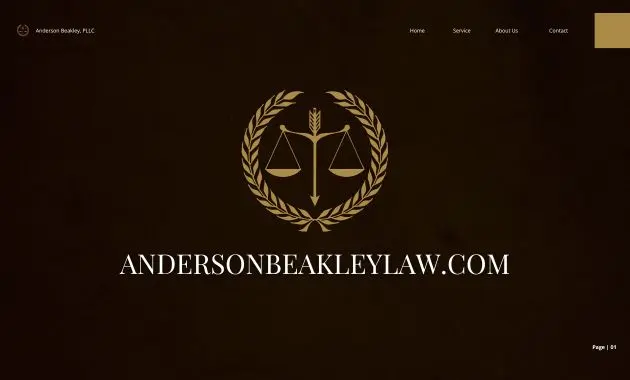Business dispute resolution is an essential aspect of any successful business. Disputes can arise from a variety of sources, including contract breaches, intellectual property infringements, and employment issues. Understanding the different stages of a dispute, from negotiation to litigation, is crucial for navigating these challenges effectively.
This comprehensive guide will explore the various methods of business dispute resolution, including traditional litigation, alternative dispute resolution (ADR), and negotiation strategies. We’ll delve into the importance of preventative measures, including effective communication and proactive risk management. Furthermore, we’ll examine the impact of technology on dispute resolution and the ethical considerations that are paramount in this process. By understanding the intricacies of business dispute resolution, businesses can equip themselves to handle disagreements effectively and minimize the potential for costly and disruptive conflicts.
Methods of Business Dispute Resolution
Business disputes can arise in various forms, from contract breaches to intellectual property infringements. When such conflicts emerge, parties need effective mechanisms to resolve them. While traditional litigation remains an option, alternative dispute resolution (ADR) methods have gained increasing popularity in recent years. Understanding the advantages and disadvantages of each approach is crucial for businesses to make informed decisions.
Also Read
Traditional Litigation
Litigation involves pursuing legal action through the court system. It offers a structured and binding process, with the potential for significant financial recovery and the establishment of legal precedent. However, it is also time-consuming, expensive, and can damage business relationships.
- Advantages:
- Provides a formal and binding process for resolving disputes.
- Offers the possibility of significant financial recovery.
- Can establish legal precedent for future cases.
- Disadvantages:
- Time-consuming and lengthy process, often taking years to reach a resolution.
- Expensive, involving legal fees, court costs, and expert witness expenses.
- Publicly accessible records, potentially damaging business reputation.
- Can damage business relationships, leading to strained future collaborations.
Alternative Dispute Resolution (ADR)
ADR methods offer alternative ways to resolve disputes outside of the traditional court system. They are often faster, less expensive, and more flexible than litigation. Common ADR methods include mediation, arbitration, and negotiation.
Mediation
Mediation involves a neutral third party, the mediator, who facilitates communication and assists the parties in reaching a mutually acceptable agreement. The mediator does not impose a decision but helps the parties explore solutions and compromise.
- Advantages:
- Faster and less expensive than litigation.
- Preserves business relationships by fostering communication and compromise.
- Provides a confidential and flexible process.
- Parties retain control over the outcome of the dispute.
- Disadvantages:
- No guarantee of a resolution, as the parties must agree to settle.
- May not be suitable for complex disputes with significant legal issues.
Arbitration
Arbitration involves a neutral third party, the arbitrator, who hears evidence and makes a binding decision on the dispute. The parties agree to abide by the arbitrator’s decision, which is usually final and enforceable.
- Advantages:
- Faster and more efficient than litigation.
- Provides a binding and enforceable decision.
- Offers flexibility in terms of procedure and evidence.
- Can be conducted in private, protecting confidentiality.
- Disadvantages:
- Less opportunity for discovery and legal arguments compared to litigation.
- Limited appeal options, making the arbitrator’s decision largely final.
- May be more expensive than mediation but generally less expensive than litigation.
Negotiation
Negotiation is a direct communication process where parties attempt to reach a mutually acceptable agreement without the involvement of a third party. It requires flexibility, compromise, and effective communication skills.
- Advantages:
- Most cost-effective method of dispute resolution.
- Provides maximum control to the parties involved.
- Can preserve business relationships by fostering collaboration.
- Disadvantages:
- Requires skilled negotiators and strong communication skills.
- No guarantee of a resolution, as parties may not be able to reach an agreement.
- May not be suitable for complex disputes with significant legal issues.
Comparison of ADR Methods
| Method | Advantages | Disadvantages |
|---|---|---|
| Mediation | Faster, less expensive, preserves relationships, flexible, confidential, parties retain control. | No guarantee of resolution, not suitable for complex disputes. |
| Arbitration | Faster, more efficient, binding decision, flexible, private. | Limited discovery, limited appeal options, can be more expensive than mediation. |
| Negotiation | Most cost-effective, maximum control, preserves relationships. | Requires skilled negotiators, no guarantee of resolution, not suitable for complex disputes. |
Choosing the Right Dispute Resolution Method
Selecting the most appropriate dispute resolution method is crucial for businesses to effectively and efficiently resolve conflicts. This choice involves careful consideration of various factors, including the nature of the dispute, the desired outcome, and the resources available.
Factors to Consider When Choosing a Dispute Resolution Method
The selection of a dispute resolution method should be guided by a comprehensive evaluation of several key factors. These factors can be broadly categorized as follows:
- Cost: Dispute resolution methods vary significantly in their associated costs. Litigation, for instance, can be expensive due to legal fees, court filing fees, and expert witness fees. Alternative dispute resolution (ADR) methods, such as mediation and arbitration, are generally less expensive than litigation.
- Time: The time required to resolve a dispute also varies depending on the chosen method. Litigation can be a lengthy process, often taking months or even years to reach a final decision. ADR methods, on the other hand, tend to be more efficient, often resulting in a quicker resolution.
- Confidentiality: The level of confidentiality desired can influence the choice of dispute resolution method. Litigation is a public process, with court records and proceedings accessible to the public. ADR methods, particularly private arbitration, offer a higher level of confidentiality, protecting sensitive business information from public disclosure.
- Desired Outcome: The desired outcome of the dispute is a key consideration. If a business seeks a legally binding and enforceable decision, litigation or arbitration may be the most suitable options. If, however, the business prioritizes a mutually agreeable solution, mediation or other forms of collaborative dispute resolution may be more appropriate.
- Flexibility: The level of flexibility desired in the dispute resolution process can also influence the choice of method. Litigation is generally less flexible, with strict rules of procedure and evidence. ADR methods, particularly mediation, offer more flexibility, allowing parties to tailor the process to their specific needs.
Industry Norms and Specific Circumstances
Industry norms and specific circumstances can significantly influence the choice of dispute resolution method. In some industries, such as construction or technology, arbitration is a common practice. This is often due to the complexity of the disputes, the need for specialized expertise, and the desire for confidentiality. In other industries, such as retail or hospitality, mediation may be more prevalent, as businesses may prioritize maintaining positive relationships with customers or suppliers.
Decision Tree for Choosing a Dispute Resolution Method
A decision tree can be a helpful tool for businesses to navigate the process of selecting the most appropriate dispute resolution method. The following decision tree Artikels a structured approach to this process:
Step 1: What is the nature of the dispute?
* Complex, involving specialized expertise: Consider arbitration or expert determination.
* Simple, involving straightforward issues: Consider mediation or negotiation.
Step 2: What is the desired outcome?
* Legally binding and enforceable decision: Consider litigation or arbitration.
* Mutually agreeable solution: Consider mediation or other forms of collaborative dispute resolution.
Step 3: What is the priority?
* Speed and efficiency: Consider mediation or arbitration.
* Confidentiality: Consider private arbitration or mediation.
* Cost-effectiveness: Consider mediation or negotiation.
Step 4: Are there any industry norms or specific circumstances to consider?
* Industry norms favor a particular method: Consider aligning with industry practices.
* Specific circumstances require a particular method: Consider the specific needs of the situation.
The Arbitration Process
Arbitration is a form of alternative dispute resolution (ADR) where parties to a dispute agree to have their disagreement resolved by an impartial third party, known as an arbitrator. This process is often chosen when parties desire a more informal and potentially faster resolution than a traditional court proceeding.
Binding and Non-Binding Arbitration
Binding arbitration is the most common form. In binding arbitration, the parties agree to be bound by the arbitrator’s decision. This means that the arbitrator’s decision is final and cannot be appealed. Non-binding arbitration, on the other hand, allows the parties to reject the arbitrator’s decision. This type of arbitration is often used as a preliminary step to see if the parties can reach a settlement.
Selection of Arbitrators and the Arbitration Hearing, Business dispute resolution
The selection of arbitrators is crucial to ensuring a fair and impartial process. Parties may agree on an arbitrator themselves, or they may use a neutral third party, such as an arbitration organization, to select an arbitrator. The process of selecting an arbitrator will depend on the specific agreement between the parties.
Once an arbitrator is selected, the arbitration hearing will proceed. The hearing will generally follow a similar format to a court trial, with each party having the opportunity to present evidence and witnesses. The arbitrator will then issue a decision based on the evidence presented.
Enforceability of Arbitration Awards and the Appeal Process
Arbitration awards are generally enforceable in court. This means that if one party refuses to comply with the award, the other party can seek to enforce the award through the court system.
However, there are limited circumstances in which an arbitration award can be appealed. For example, an award may be appealed if the arbitrator exceeded their authority or if there was fraud or misconduct during the arbitration process.
Negotiation Strategies for Business Disputes: Business Dispute Resolution
Negotiation is a critical skill in business, especially when resolving disputes. It involves finding common ground and reaching mutually beneficial agreements. Effective negotiation strategies can help businesses avoid costly litigation and maintain positive relationships with their partners.
Active Listening
Active listening is crucial for understanding the other party’s perspective and interests. It involves paying close attention to what the other party is saying, both verbally and nonverbally. This includes:
- Making eye contact: This demonstrates that you are engaged and interested in what they are saying.
- Asking clarifying questions: This ensures that you understand their perspective and avoids misunderstandings.
- Summarizing their points: This shows that you are listening and understanding their message.
- Avoiding interruptions: This allows the other party to express their thoughts and feelings fully.
For example, a business owner might actively listen to a customer who is complaining about a defective product. By carefully listening to the customer’s concerns and asking clarifying questions, the owner can better understand the situation and find a solution that satisfies both parties.
Compromise
Compromise involves finding a solution that meets the needs of both parties, even if it means giving up something. It requires being willing to negotiate and make concessions.
- Identify shared interests: This helps find common ground and build a foundation for compromise.
- Be flexible: Be willing to adjust your position and consider alternative solutions.
- Focus on the big picture: Remember that the goal is to reach a mutually beneficial agreement, not to win at all costs.
For instance, two companies might compromise on the terms of a joint venture by agreeing to share profits equally, even though each company initially wanted a larger share.
Win-Win Solutions
Win-win solutions aim to create outcomes that benefit both parties. This approach focuses on finding creative solutions that address the needs and interests of all parties involved.
- Brainstorming: Generate multiple ideas and solutions to explore various options.
- Problem-solving: Work together to identify the root cause of the dispute and find a solution that addresses it.
- Focus on long-term relationships: Aim for solutions that will benefit both parties in the long run.
For example, two businesses might work together to develop a new product that meets the needs of both their customer bases, creating a win-win situation for both companies.
Understanding the Other Party’s Perspective
Understanding the other party’s perspective is crucial for effective negotiation. This involves considering their needs, interests, and motivations.
- Put yourself in their shoes: Try to understand their point of view and why they are taking a particular stance.
- Consider their potential motivations: What are their goals and objectives in this negotiation?
- Ask open-ended questions: Encourage them to share their thoughts and feelings openly.
For example, a business owner negotiating a contract with a supplier might consider the supplier’s need for a fair profit margin and their desire to maintain a long-term relationship. By understanding these motivations, the owner can tailor their negotiation approach to address the supplier’s concerns.
Negotiation Styles
Different negotiation styles can be used in business disputes. Here’s a comparison of three common styles:
| Style | Characteristics | Advantages | Disadvantages |
|---|---|---|---|
| Competitive | Assertive, focused on winning, may use aggressive tactics | Can be effective in situations where a quick decision is needed | Can damage relationships, lead to resentment, and create a win-lose outcome |
| Collaborative | Focuses on finding win-win solutions, emphasizes cooperation and communication | Builds trust and strong relationships, leads to mutually beneficial outcomes | May take longer to reach an agreement, requires a willingness to compromise |
| Accommodative | Prioritizes maintaining relationships, willing to make concessions | Preserves relationships, can be helpful in situations where the outcome is less important | May lead to unfair outcomes, can be perceived as weak |
Practical Tips for Effective Negotiation
Here are some practical tips for negotiating effectively and achieving mutually beneficial outcomes:
- Set realistic expectations: Be prepared to compromise and don’t expect to get everything you want.
- Identify common ground: Focus on areas where you and the other party agree.
- Find creative solutions: Explore alternative solutions that address the needs of both parties.
- Be patient and persistent: Negotiations can take time, so be patient and don’t give up easily.
- Document the agreement: Put the agreed-upon terms in writing to avoid future misunderstandings.
Email to a Client
Subject: Negotiation Strategies for Your Contract with [Partner Name]
Dear [Client Name],
This email Artikels key negotiation strategies and tactics to consider when negotiating your contract with [Partner Name].
1. Active Listening: Carefully listen to [Partner Name]’s concerns and perspectives. Ask clarifying questions to ensure understanding and avoid misunderstandings. Summarize their points to demonstrate active listening.
2. Compromise: Be willing to make concessions to find a mutually beneficial agreement. Identify shared interests and be flexible in your approach. Remember to focus on the big picture and the long-term relationship.
3. Win-Win Solutions: Aim for solutions that benefit both parties. Brainstorm creative solutions that address the needs and interests of both companies. Consider the long-term implications of your decisions.
4. Understanding their Perspective: Put yourself in their shoes and consider their motivations. Ask open-ended questions to encourage them to share their thoughts and feelings openly.
5. Negotiation Styles: Be aware of different negotiation styles, such as competitive, collaborative, and accommodative. Choose the style that best suits the situation and your relationship with [Partner Name].
6. Practical Tips: Set realistic expectations, identify common ground, find creative solutions, be patient and persistent, and document the agreement in writing.
By following these strategies, you can effectively negotiate the contract and build a strong foundation for a successful partnership with [Partner Name].
Best regards,
[Your Name]
Legal Considerations in Business Disputes
Navigating the complexities of business disputes often necessitates a thorough understanding of legal principles and the potential implications of various actions. This is where legal counsel plays a crucial role, providing guidance and expertise to help businesses navigate these challenges effectively.
The Importance of Legal Counsel
Legal counsel provides valuable support in business disputes by offering a range of services, including:
- Contract Review: Legal professionals can meticulously examine contracts to identify potential risks and ensure compliance with relevant laws and regulations. This proactive approach helps prevent disputes from arising in the first place.
- Legal Advice: Legal counsel can provide tailored advice based on the specific circumstances of a dispute, offering insights into legal options, potential outcomes, and strategies for resolution.
- Representation: In the event of litigation or arbitration, legal counsel acts as an advocate for the business, presenting arguments, negotiating settlements, and representing the business’s interests in court or arbitration proceedings.
Key Legal Concepts Relevant to Business Disputes
Understanding key legal concepts is crucial for businesses to effectively manage disputes. Some common concepts include:
- Breach of Contract: This occurs when one party fails to fulfill their obligations Artikeld in a legally binding agreement. Legal counsel can assess the severity of the breach, advise on remedies, and negotiate potential settlements.
- Intellectual Property Infringement: Protecting intellectual property rights is essential for businesses. Legal counsel can advise on trademark, copyright, and patent issues, and represent businesses in cases of infringement.
- Employment Law: Business disputes often arise in the context of employment relationships. Legal counsel can provide guidance on issues like discrimination, wrongful termination, and wage and hour disputes.
Applying Legal Principles to Dispute Scenarios
- Example 1: Breach of Contract in a Supply Agreement
- Example 2: Intellectual Property Infringement in a Technology Licensing Agreement
- Example 3: Employment Law Dispute in a Wage and Hour Claim
In conclusion, navigating business disputes effectively requires a multifaceted approach that encompasses understanding the different stages of a dispute, exploring various resolution methods, prioritizing preventative measures, and embracing the role of technology. By prioritizing communication, fostering strong relationships, and adhering to ethical principles, businesses can navigate disputes successfully and maintain their competitive edge in a complex and ever-evolving business landscape.




